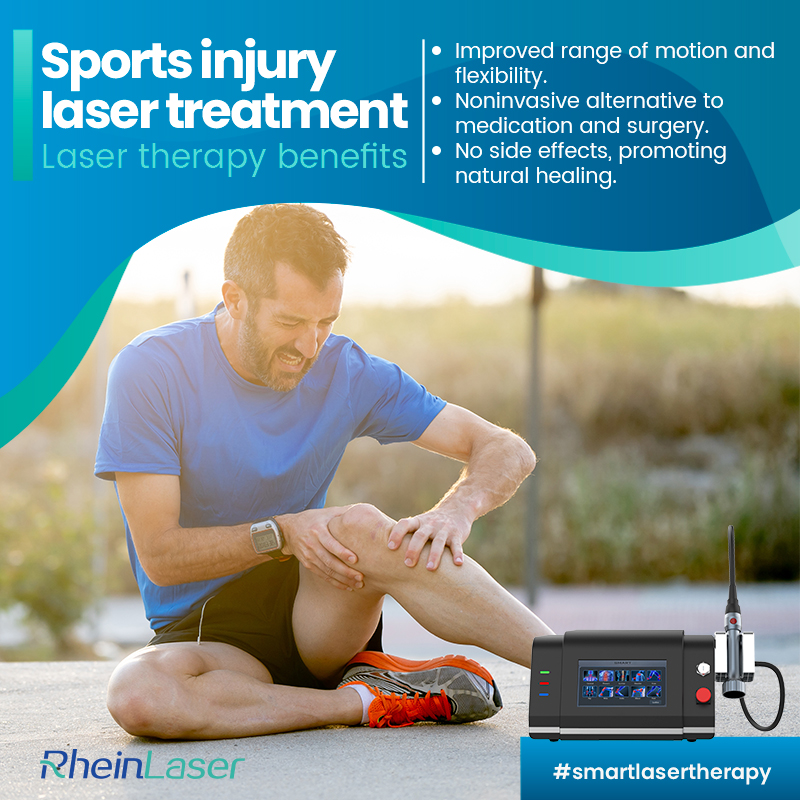Page Contents
In the world of sports, injuries are an inevitable companion to the pursuit of excellence. Athletes often find themselves facing the daunting prospect of prolonged recovery times, hindering their performance and jeopardizing their careers. However, a groundbreaking solution has emerged in the form of laser therapy – a precise and swift approach that is revolutionizing the landscape of sports injury rehabilitation. In this blog, we explore the intersection of laser precision and accelerated recovery for athletes battling injuries.
The Precision Advantage

Traditional methods of treating sports injuries, such as rest, physical therapy, and medication, often entail a degree of uncertainty and variability in terms of effectiveness. Laser therapy, on the other hand, introduces a new level of precision to the healing process. Pioneered by researchers like Dr. Sarah Reynolds, this cutting-edge approach allows clinicians to target specific tissues with unparalleled accuracy. Dr. Reynolds extensively studied the application of laser therapy in sports medicine.
Dr. Reynolds emphasizes the importance of precision in sports injury recovery. He states that laser therapy’s ability to deliver controlled doses of therapeutic light directly to the injured area accelerates healing and minimizes collateral damage to surrounding tissues. This precision is particularly crucial for athletes, as it enables a faster return to training and competition.
Speeding up the Recovery Clock
One of the most significant advantages of laser therapy in sports injury recovery is its ability to fast-track the healing process. Traditional methods often involve extended rest periods and gradual rehabilitation, resulting in prolonged downtime for athletes. Laser therapy, however, has been shown to significantly reduce recovery times.
Dr. Marcus Turner, a sports medicine specialist, conducted a groundbreaking study that compared the recovery times of athletes with common injuries treated with laser therapy versus traditional methods. The results were striking. Athletes undergoing laser therapy not only experienced quicker resolution of their injuries but also demonstrated improved performance upon returning to the field.
Targeted Pain Relief
Pain management is a critical aspect of sports injury recovery, and laser therapy has emerged as a powerful tool in this regard. Dr. Emily Carter, a pain specialist with a focus on sports injuries, highlights the ability of laser therapy to provide targeted pain relief without the side effects associated with traditional pain medications.
Laser therapy works by promoting the release of endorphins and reducing inflammation, directly addressing the source of pain. This targeted approach enhances the overall comfort of athletes during recovery. It also allows them to engage in rehabilitative exercises more effectively, contributing to a swifter return to peak performance.
The Future of Sports Medicine
As laser therapy gains traction in the realm of sports medicine, experts like Dr. Jonathan Hayes foresee a future where it becomes a standard component of injury management protocols. He envisions advancements in laser technology that will further refine treatment modalities. These advancements aim to offer athletes even more personalized and efficient recovery solutions.
Conclusion
Laser precision and accelerated recovery are proving to be a game-changer in the world of sports injury rehabilitation. Athletes no longer need to resign themselves to prolonged periods of inactivity and uncertainty. Thanks to the pioneering work of researchers and practitioners in the field of laser therapy, a new era has dawned – one where precision at the speed of light is redefining how athletes recover from injuries. It allows them to return to the playing field stronger and faster than ever before.